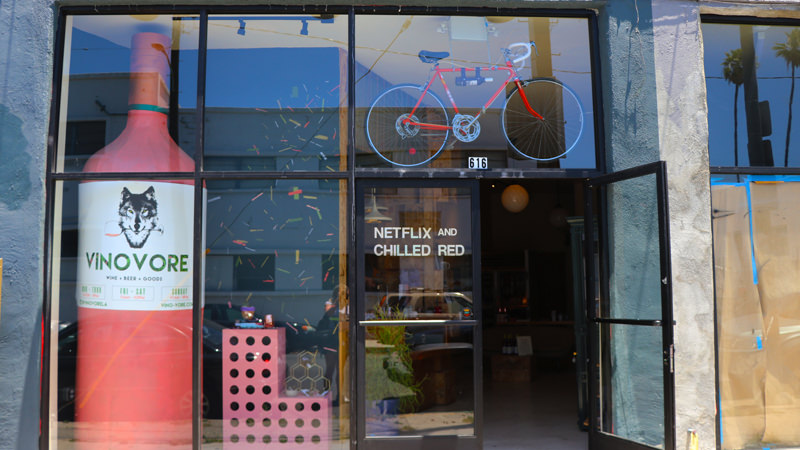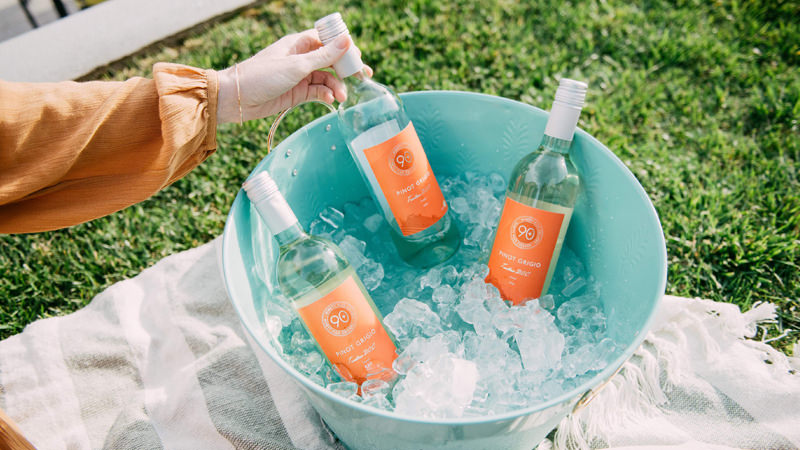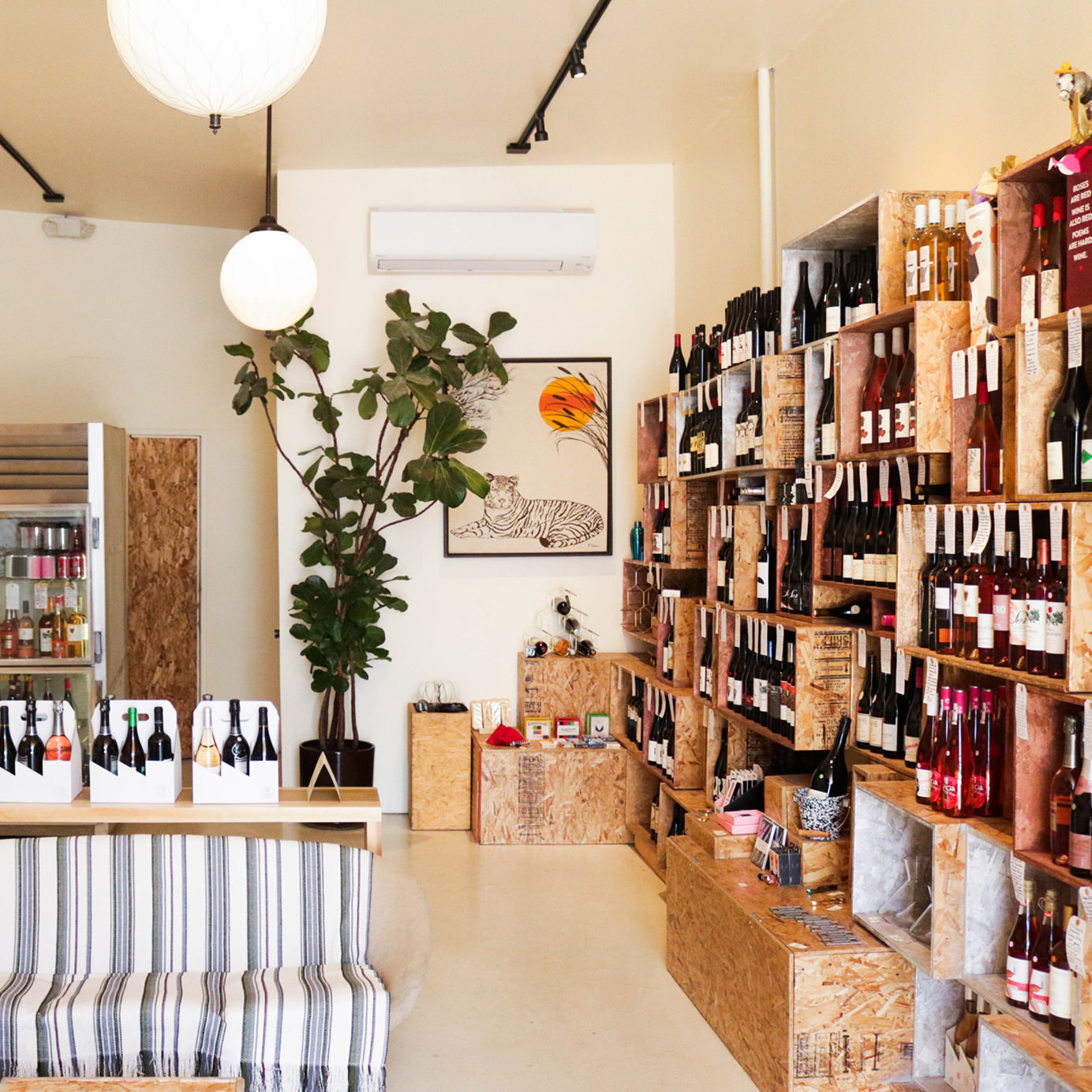Who among us hasn’t stocked our pantries with self-proclaimed “value packs” of flimsy, discounted toilet paper? Or bought expiring-soon-but-totally-on-sale bulk vitamins?
We Americans are always thirsty for a bargain. And according to analysts, affordable wine is our white whale.
“The holy grail for American wine drinkers is a cheap wine that tastes expensive,” Daniel Levine, the director of trends consultancy Avant Guide Institute, says. The popularity of dirt-cheap juice from discount supermarkets like Aldi and Trader Joe’s, and the persistence of wine clubs, speaks to our bargain-hunting natures.
“These days, more and more unknown brands are flooding the market through mass-market wine clubs,” Levine says. “You get wines that no one has ever heard of because they were just created for the wine club, and there’s no way to comparison shop because it’s just a one-off.”
Worse still, you might get a rando case of disparate wines from disparate parts of the world with notes of “horsey,” “musty,” and “moldy” flavors. (Those are actual tasting notes from a Consumer Reports review of three of the more popular clubs.)
Fortunately, there are smarter options for thrifty wine lovers. One is an O.G. model tailor-made for snobs whose wine knowledge outpaces their budgets. Another was born from the smoldering ashes of the 2008 recession and is perfect for oenophiles who care more about taste than labels. The third and final way to find good, cheap wine is to follow your conscience to organizations helping the disenfranchised, one cheap sip at a time.
Still thirsty? Here are three ways to master the market for low-cost, high-quality wine.
The O.G. Model
France’s négociant model has been part of winemaking culture since at least 11th-century Bordeaux. Estates sell excess grapes to buyers who have the resources to make wine, but not enough time or money to invest in growing and developing a vineyard.
The movement took flight in France in the 17th and 18th centuries, when Dutch, English, and German bargain hunters arrived, bought grapes from the best vineyards in bulk, made wines from the juice, and bottled it themselves.
Band of Vintners is an all-star American version of the négociant model. Born from a monthly tasting group of Napa Valley wine professionals, the “band” consists of Dan Petroski, winemaker at Larkmead and Massican; Jason Heller, a Master Sommelier and partner at Wine Ring and Scale Wine Group; Stephane Vivier, winemaker at Hyde de Villaine and Long Meadow Ranch; Mark Porembski, winemaker at Anomaly Vineyards and Unwritten Wines; Brennan Anderson, partner at Folio Fine Wine; Barrett Anderson, winemaker at Jackson Family Wines; and Cameron Hobel, founder of Milton Road Trading Co.
In 2014 this illustrious crew pooled its considerable resources to create a single, sustainably produced Napa Valley Cabernet Sauvignon. Dubbed Consortium, it retails for around $40 and can compete with wines three times its price.
“We have all been friends and colleagues for a decade of more,” Heller says. “Of the seven of us, we have several winemakers and several who know sales and operational logistics. Between us, we knew we had the resources to buy premium grapes from reliable Napa Valley vineyards, blend and make the wines, and sell them.”
Consortium uses grapes from organic vineyards and consists of a blend of Cabernet (anywhere from 83 to 93 percent, depending on the year), Merlot (4 to 15 percent), and Cabernet Franc (2 to 3 percent). It is aged for 15 to 18 months in French oak, and typically hovers around 14.5 percent ABV.
The Band has successfully leveraged its collective reputation to land on the Del Frisco Restaurant Group’s wine lists, on Somm Select, and in the American Airlines Executive Lounge.
“A lot of people have found us through American Airlines,” Heller says. “Who doesn’t like a free pour? But reading online reviews, we’ve discovered that they then actually seek us out later.”
The Band grew the brand from 1,600 cases available in five states in 2014, to 5,000 cases sold in 22 states in 2016. The 2017 vintage is a “question mark” because of the region’s devastating wildfires, but Vivier believes they’ll be able to produce around 5,000 cases without compromising quality.
“We’ve been successful because we personally know all of the people who are growing our wines,” Vivier says. “We know each other’s winemaking styles so intimately, and our logistics are so streamlined with trucking and deliveries, it takes us 48 hours to make a blend, even if there are five us doing it. Other Napa négociants aiming for the same caliber of wine will take six months to produce the same amount.”

The négociant model is an affordable option in an expensive region. Prime Napa Valley vineyards can go for $400,000-plus an acre, and the cost of winemaking has reportedly climbed 18 percent in the past five years. The starting price for Napa-grown grapes is $4,600 per ton, and Napa Cabernet Sauvignon grapes are set to hit $10,000 a ton soon.
“In Napa, some people are paying $15,000 or more a ton for Cabernet, which translates into wines that are $150 a bottle and more,” Josh Phelps says. A Napa native, Phelps is the founder and winemaker of Grounded Wine Co., another area winery using the négociant model.
“Because of my relationships in Napa and, now, in Washington, I have been able to source grapes and produce terroir-driven wines from the same network of sustainable vineyards in California and Washington that may not be ‘cheap,’ but are certainly a bargain,” Phelps says.
This past year, Grounded produced 1,200 cases of Steady State at $65 a bottle, 3,000 cases of Collusion at $22 a bottle, and 323 cases of Space Age at $20 a bottle. Phelps says he is poised to grow those numbers by 50 percent with his next vintage.
Even if they don’t know the term “négociant,” the system appeals to American consumers. It offers value for money, and the idea of winemakers growing their own grapes appeals to contemporary, farm-to-glass sensibilities.
The New Négociant
Boston-based wine executive Kevin Mehra is a different type of intermediary between winemakers and buyers. His company, 90+ Cellars, purchases excess, expensive wines directly from estates and sells them under different labels for considerably lower prices.
Mehra launched the company in the aftermath of the 2008 economic crisis. As global markets collapsed, demand for expensive estate wines plummeted in tandem. Winemakers were left with a bumper crop of grapes and no buyers.
“It was an absolute glut,” Mehra says. “I saw a significant arbitrage opportunity that would be a win-win for everyone.”
Translation? He seized the chance to resell pricey wines on the cheap.
He began by contacting vineyards and winemakers to find out how much extra wine they had. The response was enthusiastic and immediate, so he figured he could be choosy about the caliber of wine he resold.
He created a database of top-ranking wineries around the world, all of which had earned ratings of 90 or more (or equivalent accolades). He emailed 150 or more a day. Half of them would respond, a quarter of those respondents might send samples, and he would consider about half of what he received.
“I only wanted pre-made wine from reputable wineries,” Mehta says. “They wanted to work with me because they had to sell their wine or lose it, and they didn’t want to discount it themselves and compromise the label for the future.”
The first year, Mehra sat in his basement and bought 5,000 cases from seven wineries, then hand-sold them around Massachusetts. One Shiraz that normally retailed for $25 was sold for $14. A $20 Malbec from Argentina went for $11.99.
He soon brought on financier-turned-wine-store manager Brett Vankoski, who helped Mehta turn his good idea into an industrial juggernaut. In 2017, they moved about 394,000 cases. 90+ Cellars is available in 14 states.
While some things have changed, their basic model remains, with a few tweaks.
“The consolidation of distributors and importers in the U.S. market has made it harder for small and medium-sized wineries get traction here,” Vankoski says. “So the inefficiencies in the market allow us to access a lot of phenomenal wine abroad.”
Bottles from 90+ Cellars include Pinot Noir from California’s Russian River Valley, Sauvignon Blanc from Marlborough, New Zealand; rosé from Languedoc in France. Labels are changed but the region of origin is always listed.
For those who care more about drinking high-quality juice than ‘gramming labels, Mehta’s model offers incredible savings. “You’re paying for the wine. You’re not paying for the label,” Mehra told the Boston Globe. “We are making unapproachable and unaffordable wines more accessible.”

Custom Curation
A variety of next-generation services can curate wine selections for you based on individual priorities such as sustainability, gender, and, of course, budget.
Los Angeles sommelier Coly Den Haan is the co-owner of Vinovore, a Silver Lake wine shop that offers curated selections of women-made wine.
“If you look at the statistics, especially in the U.S., it’s staggering how imbalanced the ratio of male and female winemakers is,” Den Haan says.
(She has a point. Only about 10 percent of winemakers in California are women, according to data gathered by Santa Clara University. Only 4 percent of women winemakers own wineries, versus 47 percent of winemaking men.)
“I search for the best female winemakers in the world,” she says. “I want to lend their work a spotlight.”
Given the “ridiculous real estate prices in Napa” and their trickle-down effect on the prices of wine, Den Haan urges budget-minded lovers of premium wine to also look abroad.
“A lot of the chateaux and estates in France and Italy have been handed down from generation to generation through families, regardless of gender,” she says. “So there are a lot more affordable wines made by women from Europe.
A few of Den Haan’s perennial favorites include Languedoc-Roussillon’s Domaine Julie Benau’s Picpoul de Pinet or rosé ($16), Amy Atwood’s Oeno Wines (made négociant-style and starting around $23), Cyprus’s Monolithus Wines (starting around $17) and 100 percent sustainable Middle-Earth Wine from New Zealand (starting at $16).
Unfortunately, at this point, Vinovore’s selections are not available for national shipping. Women-Owned Wineries, launched via crowdfunding in May, starts at $59 for two bottles a month. It operates along the same ideological lines as Vinovore and ships nationwide.
For those searching for cheapish wine made by sustainably minded producers, there’s Plonk Wine Merchants. It offers bottles made with organic and biodynamic grapes only, with prices starting at $285 for 12 bottles.
Knowledge Is Power
Wine, Levine points out, can be a challenging investment. “It’s impossible to pick one label and expect the same thing, vintage after vintage for decades,” Levine says. “Our tastes change, winemakers change, the grapes themselves change depending on the weather and other factors.”
By allying yourself with custom curators and services like 90+ Cellars, or by pursuing négociant-made wines, you can find excellent deals hiding in plain sight. Your palate, wallet, and pantry will thank you.
